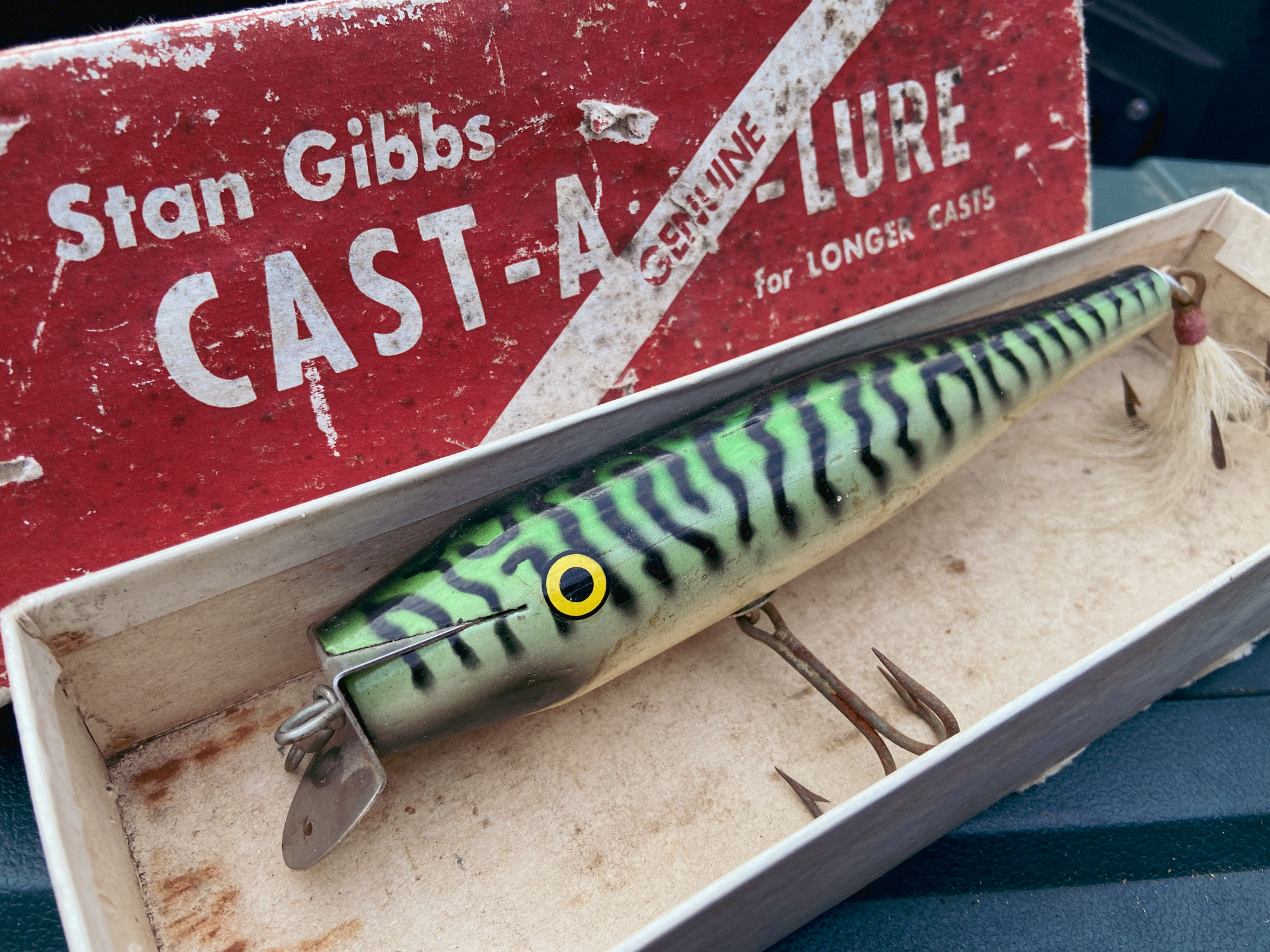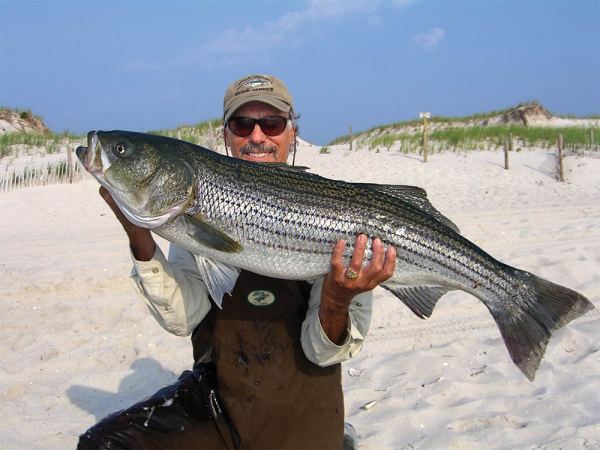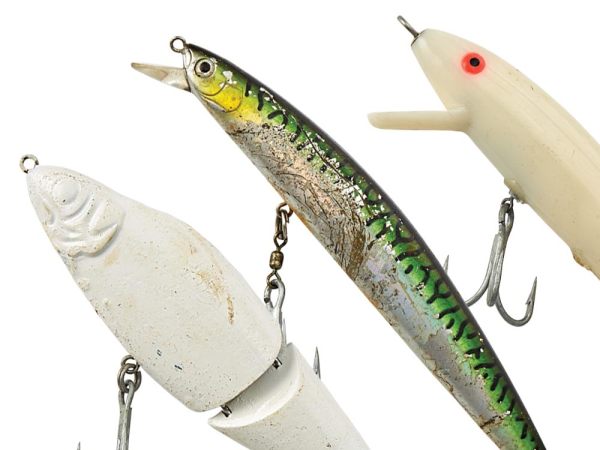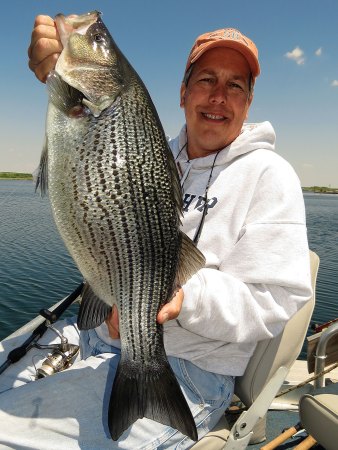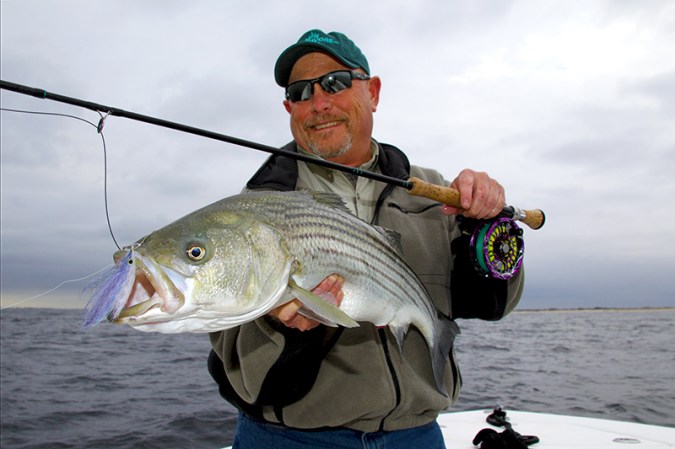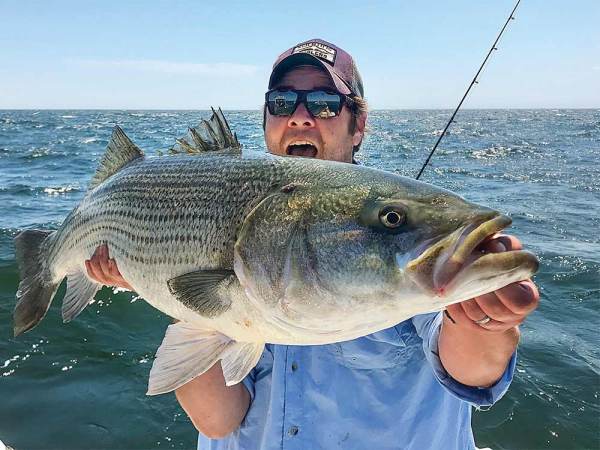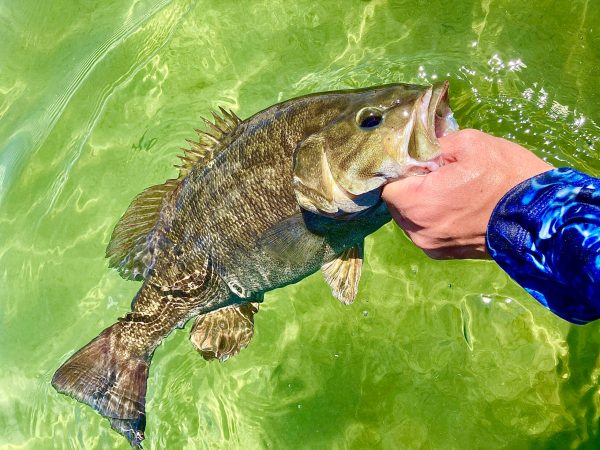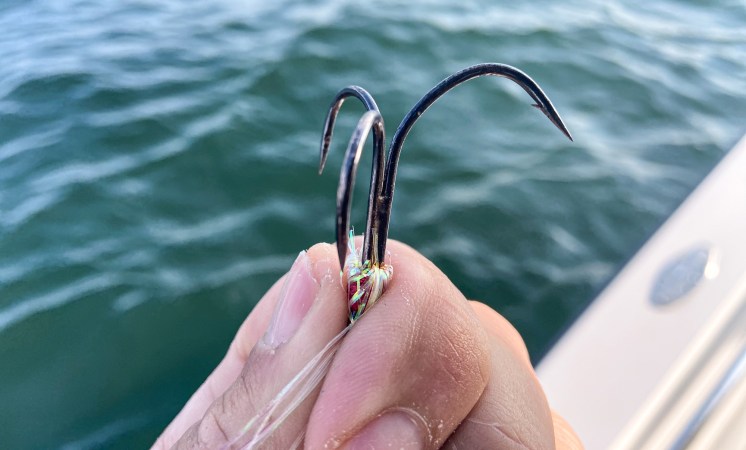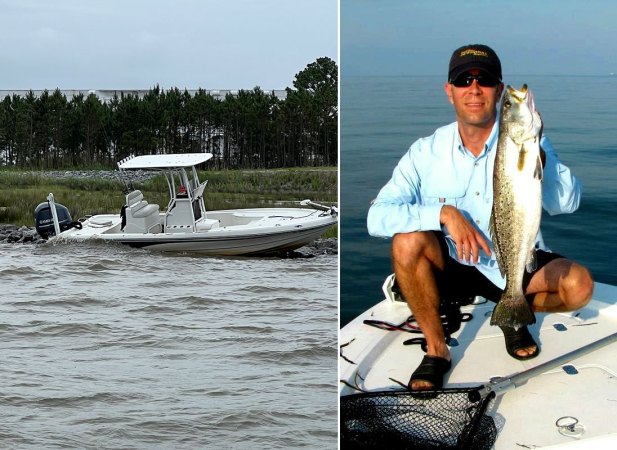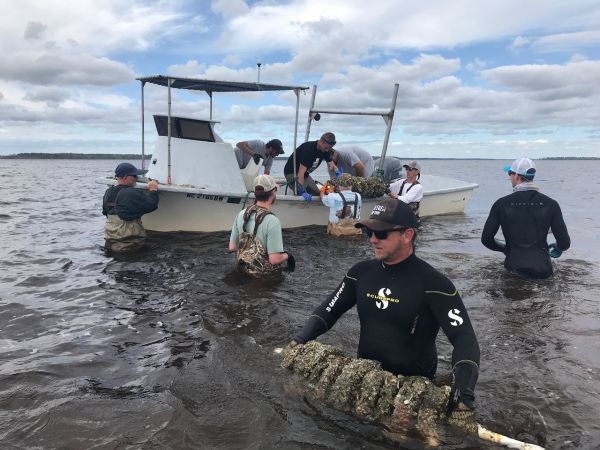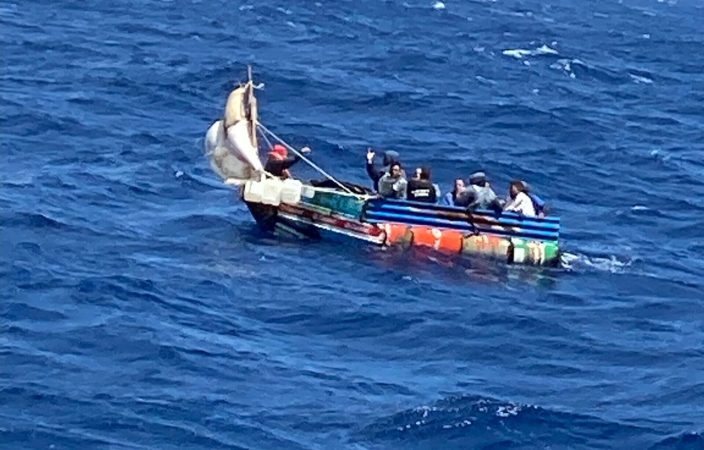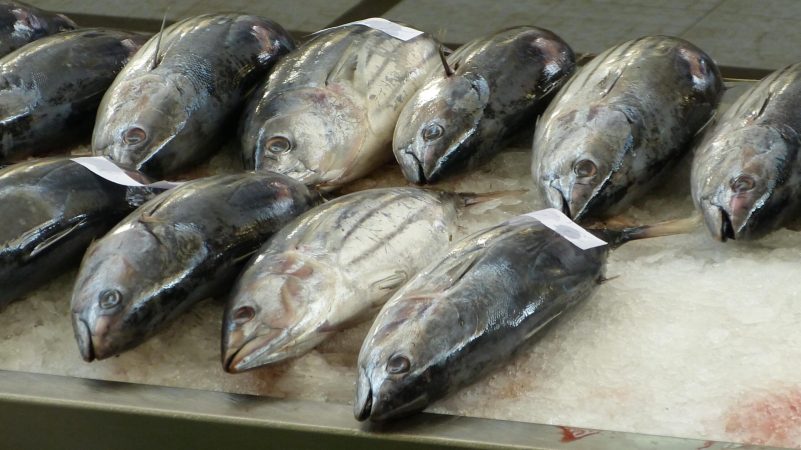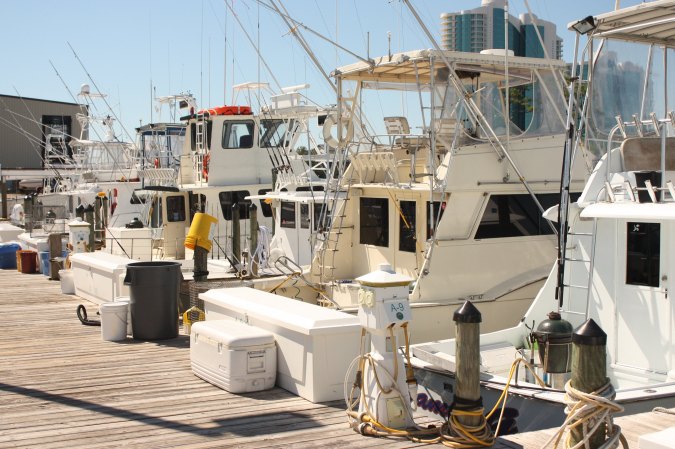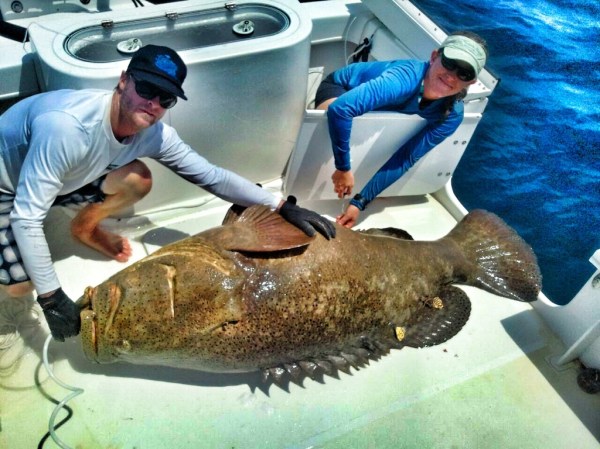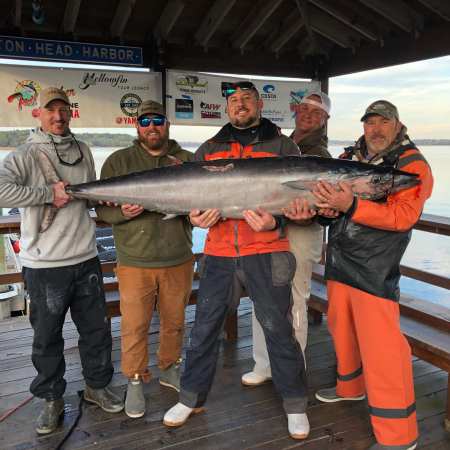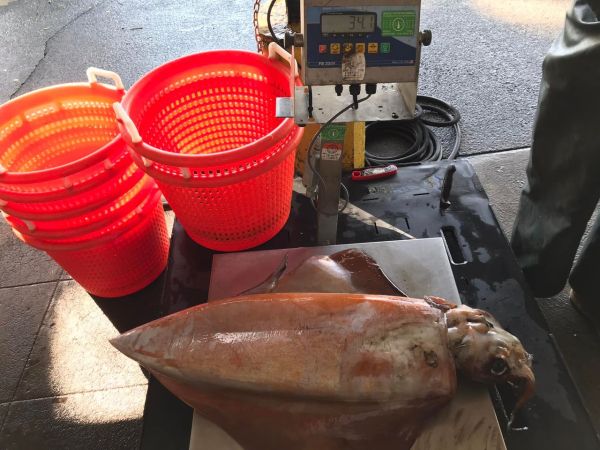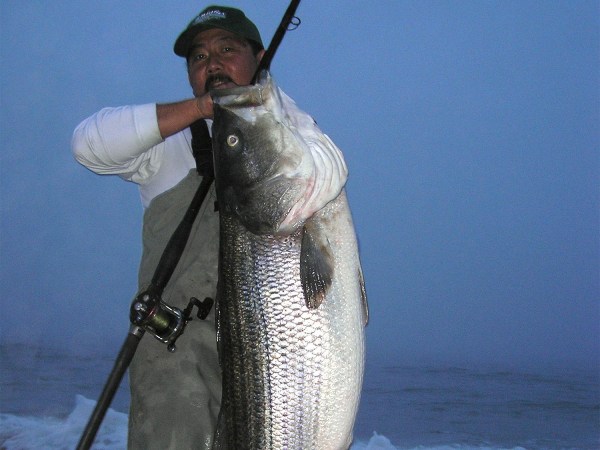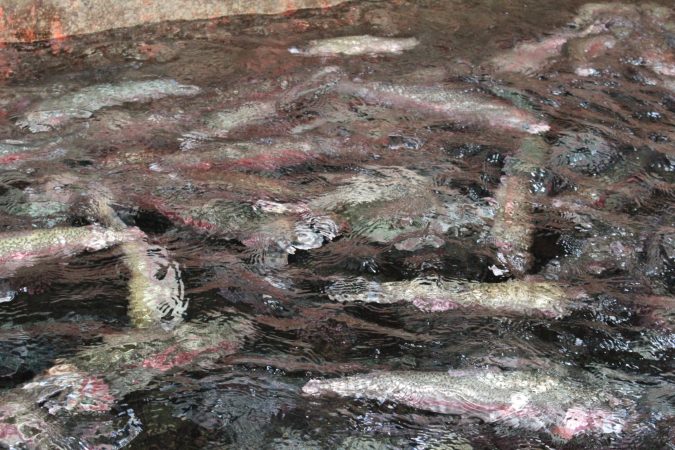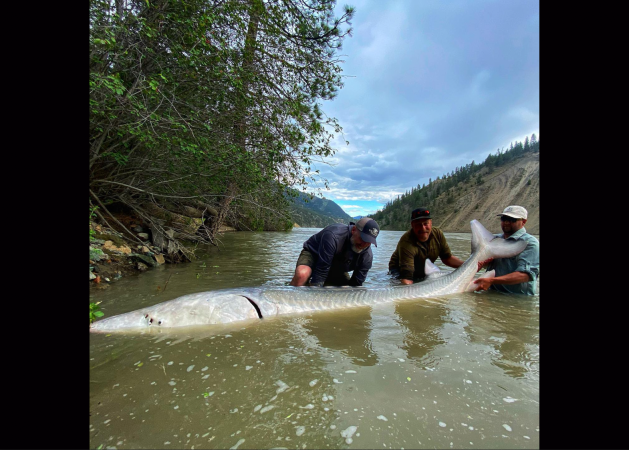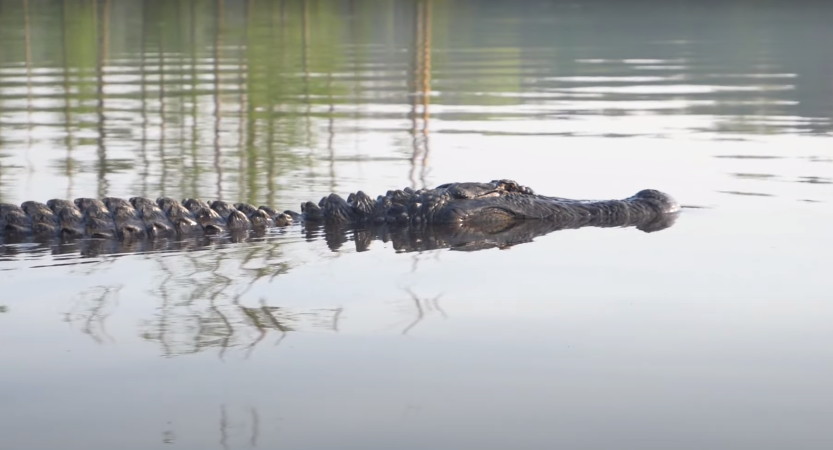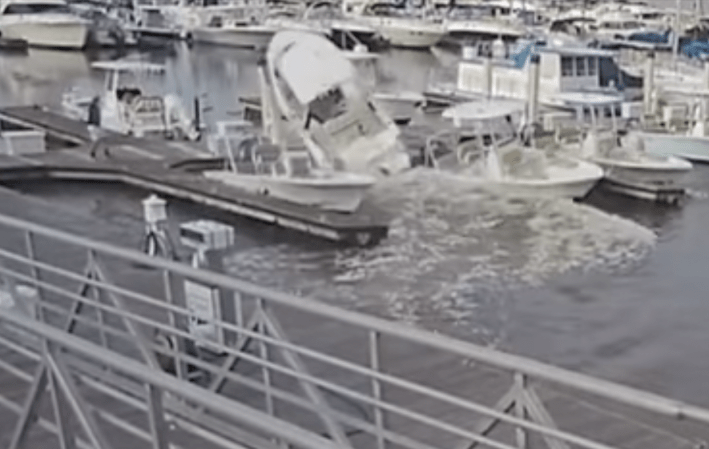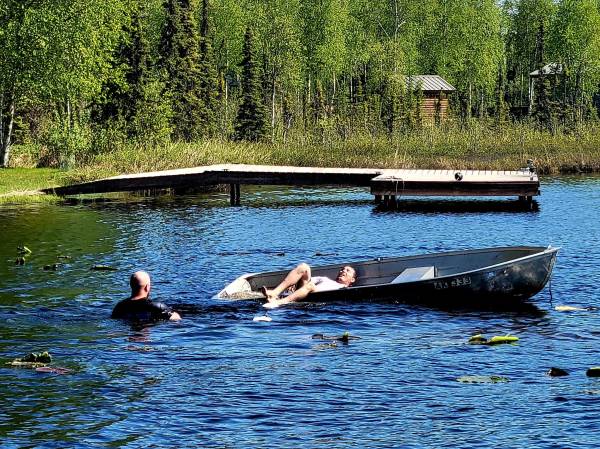We may earn revenue from the products available on this page and participate in affiliate programs. Learn More ›
We may earn revenue from the products available on this page and participate in affiliate programs. Learn More ›
If you live near the coast from Massachusetts to Virginia, fall means big striped bass. This time of year, these migratory fish are steaming south and chowing down. Best of all, you don’t need a boat to cash in on the run. Now is the best time for surfcasters on beaches, jetties, and inlets up and down the coast to get their offerings in front of heavy fish. So, what do you throw?
In terms of lures, striper fishing is no different than any other kind of fishing: There’s an overwhelming number of options in tackle shops, and new baits seem to pop up all the time. Striper surf fishing, however, is a sport steeped in history and lore. Many of the plugs and jigs pipe-smoking, slicker-donning striper hunters were slinging 50, 60, and 70 years ago are just as effective today. In fact, they may be more effective than some of the most modern baits. Here are three of the most proven classics. They’re easy to fish regardless of skill level, and they haven’t remained in production for decades because they stopped catching monster bass.
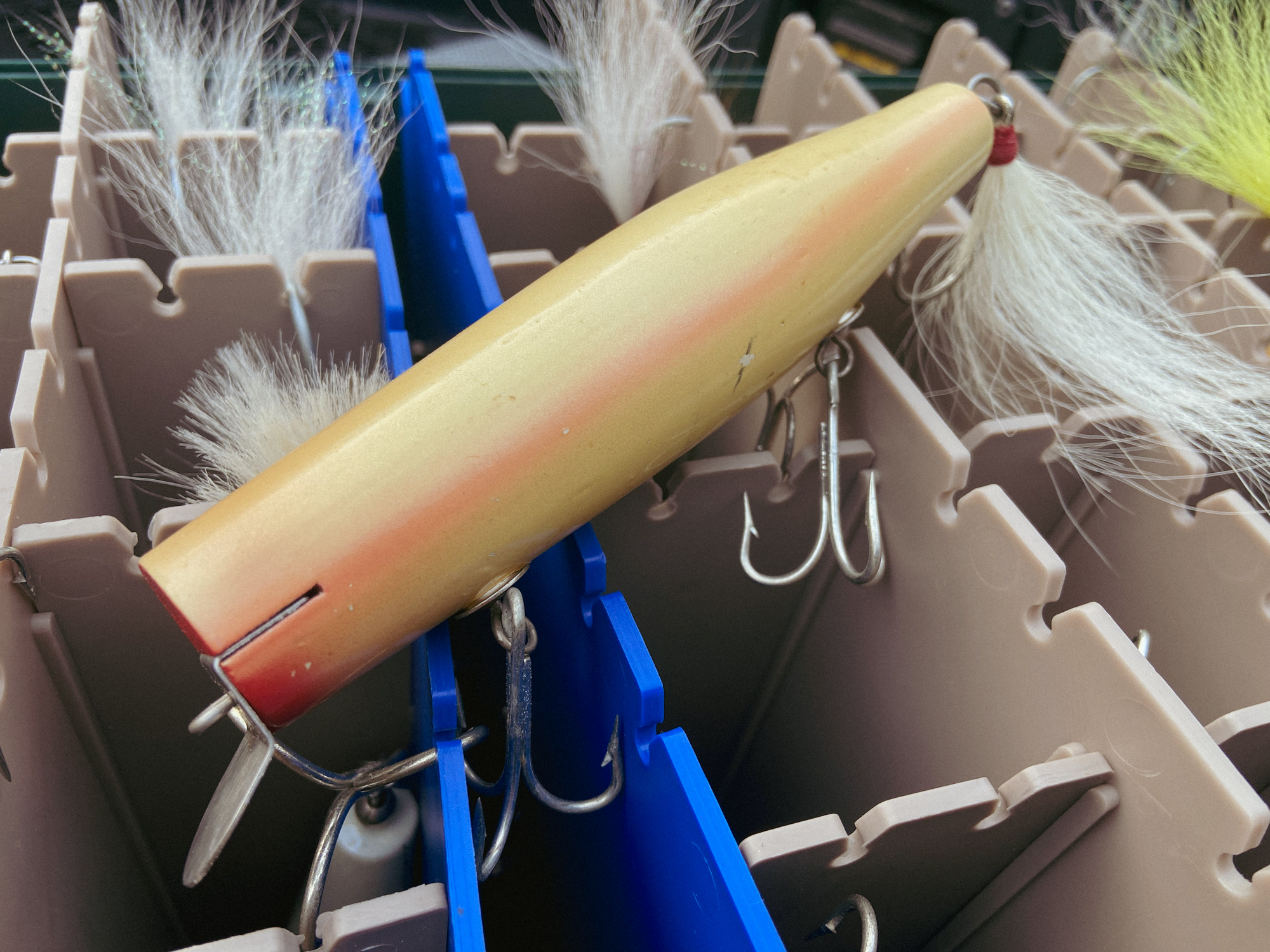
The Gibbs Danny Surface Swimmer
No lure maker is more synonymous with striper surf fishing than Stan Gibbs. In 1945—the same year World War II came to an end—Gibbs Lure Company was born in Massachusetts, and the timing couldn’t have been better. During the post-war era, Americans found more time and money for recreation and leisure activities, which included surf fishing. The 1950s are largely considered the golden era of the sport as trophy fish were plentiful, rods, reels, and line became finely tuned for beach battle, and affordable lodging began popping up in places like Montauk, New York, and across Cape Cod. Prior to Gibbs, surfcasters leaned on plugs like the Creek Chub Pikie Minnow, and while effective, they were made in the Midwest for freshwater pursuits. But Gibbs were built by striper fishermen for striper fishermen. The company would release several plug styles that remain staples today, but none is arguably more versatile and effective than the Danny Surface Swimmer.
At seven inches long, the Danny is a big lure that matches big striper food like menhaden and mackerel. Each Gibbs is turned from wood sourced in the Pacific Northwest to provide maximum buoyancy and, more importantly, durability. It’s not uncommon for surfcasters to cast—and catch with—the same Danny for 10-plus years. The secret lies in the lure’s sharply angled metal lip. To the untrained eye, you might expect that lip to make the lure dive, but it actually makes the lure roll and waddle across the surface. As it moves, that lip pushes water around the flared body to create the Danny’s calling-card V wake those big stripers home in on.
Countless smaller custom plug makers produce their own surface swimmers, but they’re all an homage to the Gibbs, which is still made in the Northeast today. To score with one, remember that less is more; make a long cast, keep the rod tip up, and reel painfully slow. Let the pull of receding waves or tidal current in the inlet do most of the work and hang on tight because it’s not often a small bass that clobbers a Danny.
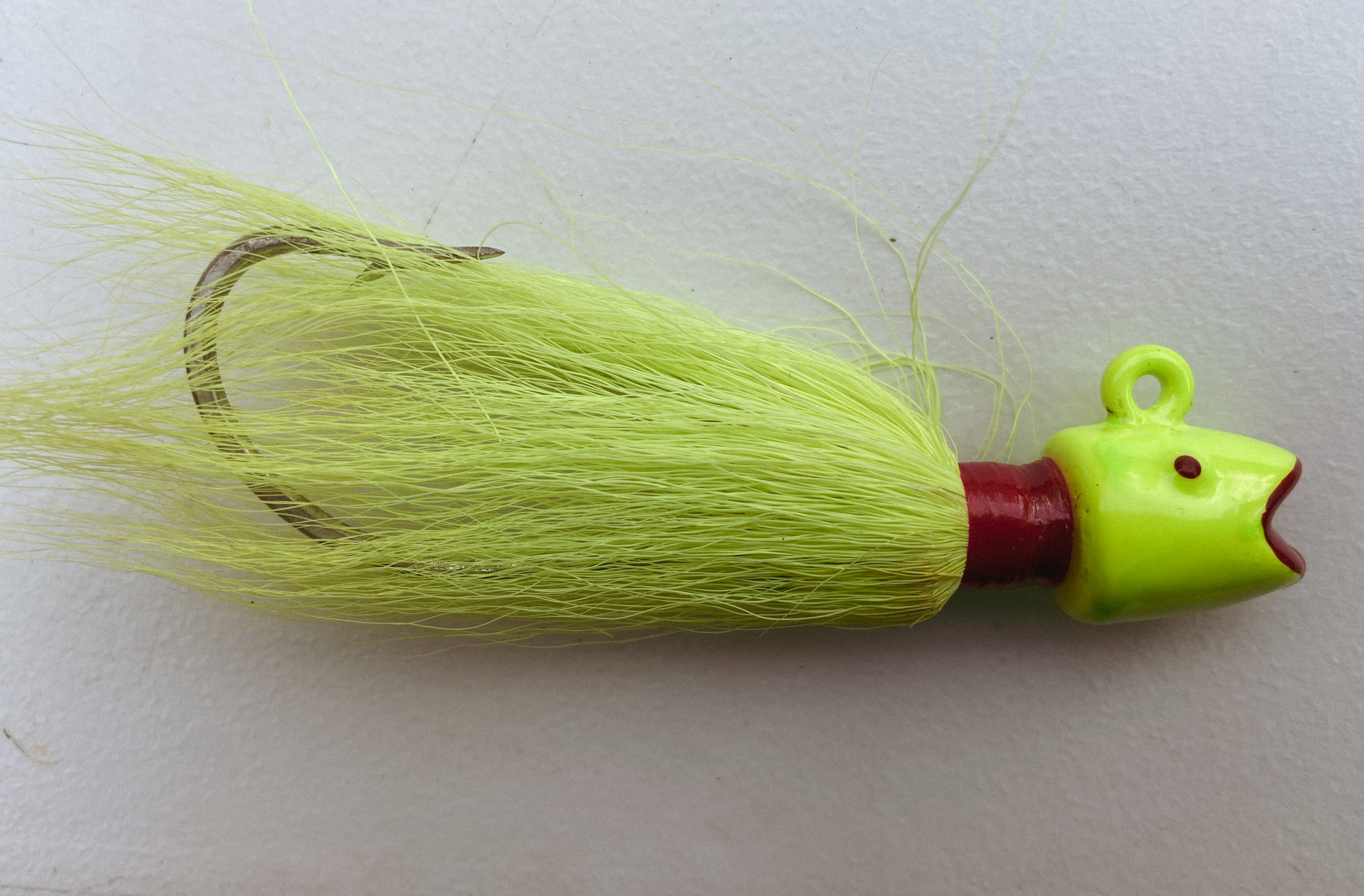
The Smiling Bill Bucktail
The history of the Smiling Bill bucktail jig is rather convoluted. Research suggests it debuted in the 1950s in Florida and quickly became a staple farther north in striper country, particularly among anglers fishing from boats. Bucktails have been around for well over 100 years, and it’s safe to say they’ve been getting thrown in the surf for a long time, but some trace the popularity of the Smiling Bill to a Jersey guy named Richie Andrus, who created his own version of this jig with its signature split, “smiling” mouth. As the story goes, bucktail jigs were not very popular in Montauk, New York, in the late 80s until Andrus showed up and dominated the fish below Montauk Light with his revamped Smiling Bill. The truth is out there, but the details are ultimately unimportant, because the bottom line is that several companies now produce this style of bucktail and they’ll catch any bass that swims.
Some anglers believe the open mouth of a Smiling Bill creates puffs of sand as in bounces along the bottom. Others say it acts kind of like a plug lip, producing a better swimming action when reeled quickly. Meanwhile, some people say the mouth is just cute and eye-catching but serves no further purpose. Regardless, Smiling Bills are versatile and made with ultra-strong hooks, usually with a shorter shank than other bucktails. This beefed-up construction stops big bass from bending them out during fights in heavy current. To increase vibration and wiggle, many surfcasters tip their bucktails with red pork strips or large curly-tail grubs.
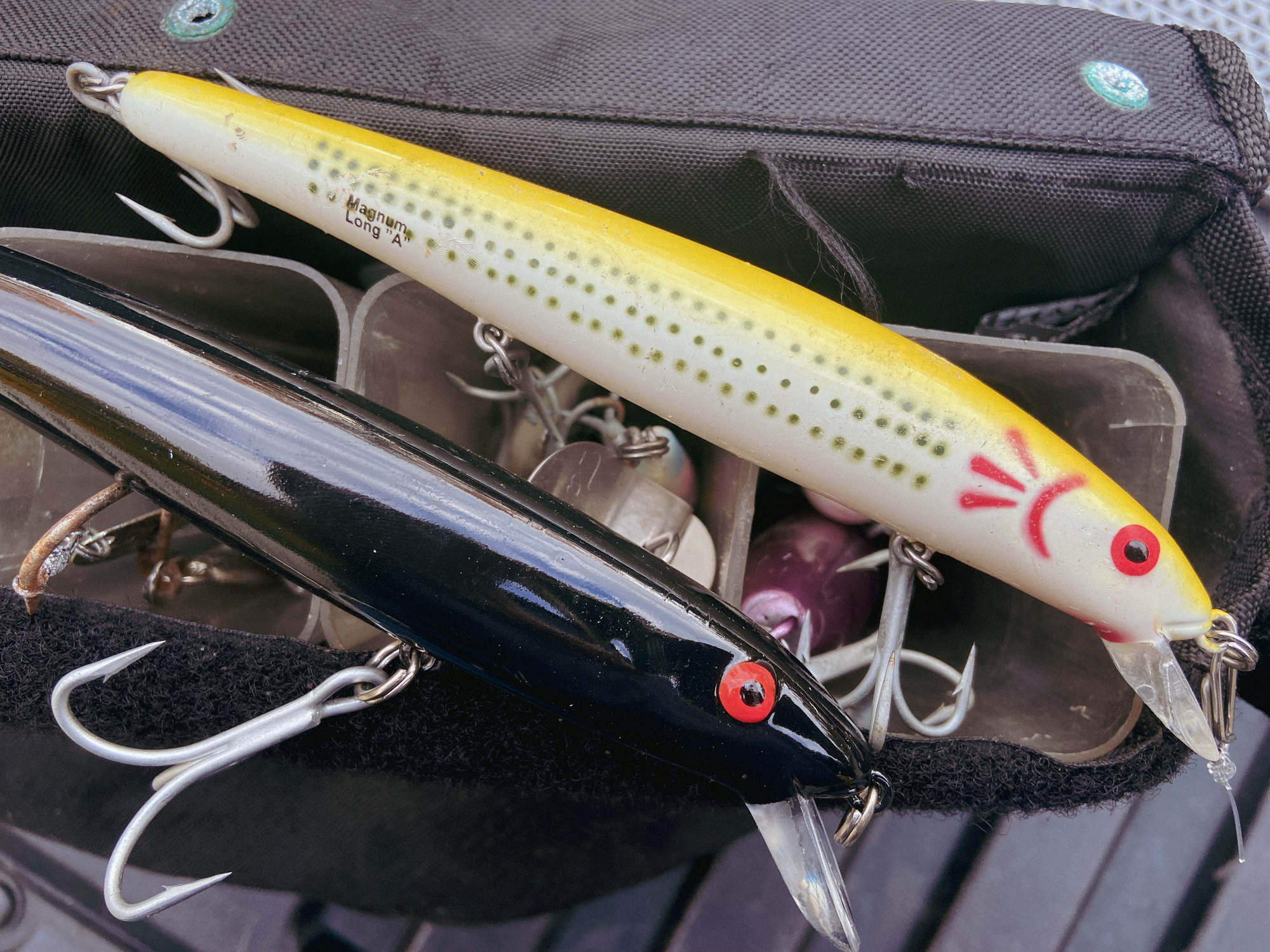
The Bomber Long A
Introduced in the 1970s, the Bomber Long A was one of the first saltwater-grade plugs made of plastic that had the durability to stand up to cow stripers. That injection-molded plastic construction subsequently made the lure much more affordable than many wooden lures of the era. In essence, the Bomber helped more people get into surfcasting, because they could grab these lures off any department store shelf. Furthermore, Bombers were extremely productive, which is why they’re still around today.
Where these plugs really made their mark was on the sandy beaches of Long Island and New Jersey. Here, stripers fed in troughs and cuts close to the break line, so mile-long casts weren’t as critical as they were in places like Montauk and Block Island. A Long A isn’t soaring as far as other lures, but what it lacks in distance it makes up for with action.
Long As are slender and available in jointed and non-jointed models. Their thick, slim, durable lips help them dive with very little effort. This proved to be plus in the surf, as wave action alone was enough to pull a Bomber under and get it wobbling seductively. At night, surfcasters barely turn their reel handles when working a Bomber. Retrieves can feel like they last forever when you do it right, and while the method can get a bit boring, you’ll jolt to attention when a striper hits one so hard it about takes the rod out of your hands.
At night, black is a staple color because it produces such a crisp silhouette. During the day, “school bus” yellow is a classic, as is pale yellow with brown stripes, often referred to as “chicken scratch.”

